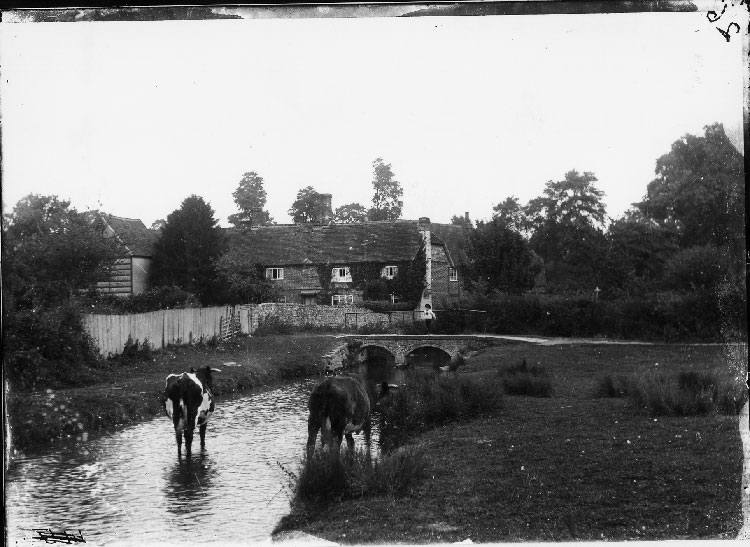History
Iron Age Settlement
Long ago, people chose to settle along the Letcombe Brook as it provided a clean and plentiful supply of fresh water. The character of the brook has been shaped and changed by centuries of human endeavour as the brook was used for water collection, farming and industry.
In the spring of 2019, Letcombe Brook hit the national headlines! During the preparation phase for a new pipeline, archaeologists working with Thames Water uncovered 26 human skeletons believed to be from the Iron Age and Roman periods. Evidence of dwellings, animal carcases and household items including pottery, cutting implements and a decorative comb were also found.
The Romans
It is thought that a Roman settlement first grew up in Wantage in the 1st century, surviving into the 4th century. The Roman village, based in the Denchworth Road area to the west of the town, served the agricultural community in the countryside surrounding it. It had buildings of both wood and stone and particularly impressive were its ‘tower-granaries’ where grain was stored before being sold or taken as taxes to feed the Roman army.
The A338 is part of an old Roman Road, heading south from Alchester and fording the Thames at Oxford, before reaching Wantage. It eventually joined the Ermine Way, probably around Lambourn Woodlands.
King Alfred the Great
King Alfred was born in the royal palace in Wantage in 849. He went on to become King of Wessex from 871 – 886 and King of the Anglo-Saxons from 886 – 899.
Alfred had a reputation as a learned and merciful man of a gracious and level-headed nature who encouraged education, proposing that primary education be conducted in English rather than Latin, and improving his kingdom’s legal system, military structure, and his people’s quality of life.
Alfred’s Well
The name is often thought to originate from King Alfred but in fact comes from Alfred Hazel, a founder Baptist in Wantage, who formed a dam at the natural springs in the brook to control the water for a sheep dip to clean fleeces and cloth. The pool was also used for baptisms.

Mills
In 1086, there were 10 water mills sited along the Letcombe brook, including one at Letcombe Bassett, two at Letcombe Regis, Grove and East Hanney and three in Wantage. Eight mills were milling corn and two, sited at Letcombe Basset and Letcombe Regis, were fulling mills, where cloth was beaten in the process of textile manufacture. Further information can be obtained from the Mills Archive Trust: www.millsarchive.org/explore/mills/database?category:river=348
Sir John Betjeman
The poet laureate moved to the Mead in Wantage in 1951 and this remained as his family home for many years. His wife, Penelope, opened a tea shop in the town called King Alfred’s Kitchen.
He was knighted in 1969, appointed Poet Laureate to great acclaim in 1972 and received many other prizes and honours including an honorary doctorate from Oxford and Fellowship at Magdalen.
Betjeman Millenium Park, alongside the brook in Wantage, celebrates his life and works with a poetry sculpture trail and information boards.
Watercress
Letcombe Bassett, the source of the Letcombe Brook, was well known in the past for its watercress production. The village was the inspiration for the aptly named Cresscombe in Thomas Hardy’s book ‘Jude the Obscure’.
Watercress is no longer commercially harvested from the Letcombe Brook but the old cress beds can still be seen at Letcombe Bassett.

